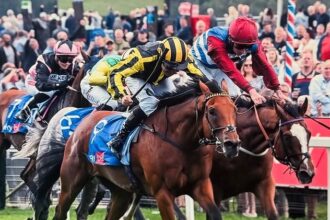In a country known for embracing futuristic technologies across industries, it is no surprise that the United Arab Emirates (UAE) is pioneering the use of virtual reality (VR) in sports training. Across the nation—from professional football stadiums to youth academies—coaches are turning to immersive tech to reshape how athletes learn, train, and perform.
The use of VR in sports is not simply a trend; in the UAE, it is becoming a cornerstone of innovation in athletic development. As part of the country’s larger vision to integrate advanced technologies into all aspects of society, UAE coaches are blending traditional training with virtual simulation to produce smarter, more adaptable athletes. From enhancing reaction time to simulating real-match pressure and correcting techniques, VR is changing the face of coaching—one headset at a time.
A New Era of Immersive Training
Virtual reality creates simulated, interactive environments that mimic real-life sports situations. Athletes wearing VR headsets can be placed in various game scenarios—from penalty kicks under pressure to tactical decision-making moments—all without stepping on an actual pitch or court.
In UAE training centers, coaches use VR to help athletes build mental and physical readiness. These simulations allow for repetition of high-pressure moments—like a goalkeeper facing a last-minute penalty or a basketball player taking a buzzer-beater shot—without the risk of injury or fatigue. Athletes can repeat these moments dozens of times in a short span, strengthening mental resilience and muscle memory.
For many UAE coaches, this means training smarter, not just harder. And athletes are responding positively, with improved decision-making, spatial awareness, and strategic thinking showing up in live games.
Bridging the Gap Between Theory and Execution
One of the biggest challenges in sports coaching has always been turning theoretical instruction into practical execution. With VR, that gap is shrinking.
Instead of relying solely on chalkboard sessions or video replays, UAE coaches now offer immersive tactical walk-throughs. A player can put on a headset and see a match unfold from different angles: their own position, the coach’s point of view, or even from an opponent’s perspective.
This method is especially effective in sports like football, cricket, and rugby, where positional awareness and split-second decisions make the difference between victory and defeat. Players not only learn plays but feel them, rehearse them, and anticipate outcomes in a 3D virtual space—an experience far more engaging than watching a static replay.
Enhancing Cognitive Training and Reaction Time
In fast-paced sports, cognitive sharpness is as critical as physical fitness. Coaches in the UAE are using VR tools that test and enhance reaction time, focus, memory, and situational judgment.
For instance, goalkeepers in UAE football clubs train in VR simulations that present hundreds of penalty scenarios in rapid succession, helping them read opponents’ body language and guess ball trajectories faster. In combat sports, fighters use VR to read movement cues and dodge strikes, sharpening reflexes without taking physical damage.
This type of cognitive training is especially useful for injured players, who can stay mentally sharp during recovery periods by continuing tactical VR sessions. Coaches report that athletes who engage in VR training during rehab often return to the field more mentally prepared than before.
Safe, Controlled, and Customizable Learning Environments
VR offers safe and repeatable training environments, a benefit that UAE coaches are leveraging, especially for youth development. Unlike live drills, where fatigue and collisions can result in injuries, VR allows players to experience high-intensity decision-making in a risk-free setting.
This is particularly valuable in contact sports like rugby or martial arts, where scenarios can be simulated with perfect control over pace and difficulty. Coaches can fine-tune the training to match an athlete’s development level and gradually introduce complexity.
For example, a young basketball player may start by learning basic positioning in a calm simulation, then progress to full-court plays under crowd noise and time pressure—all within a virtual environment, under the watchful eye of the coach.
Personalized Feedback and Data-Driven Improvement
One of VR’s greatest strengths lies in the data it collects. UAE coaches are now using this data to track performance trends, spot weaknesses, and design hyper-targeted improvement plans.
Metrics like reaction speed, eye movement, movement efficiency, and accuracy can be tracked and visualized. Coaches then sit with athletes to review VR replays and discuss alternative decisions or techniques—creating a learning loop that is both engaging and data-rich.
This level of analysis was once only available in elite sports science labs. Today, with the UAE’s commitment to innovation, even school-level athletes are benefitting from personalized coaching powered by cutting-edge virtual tools.









